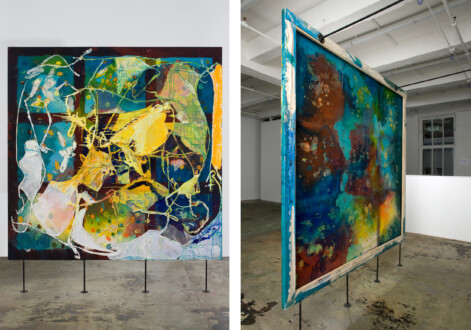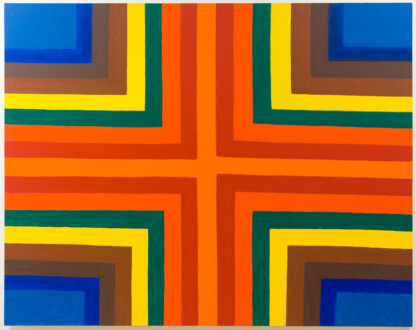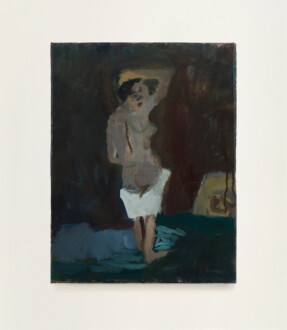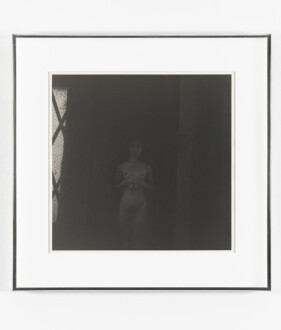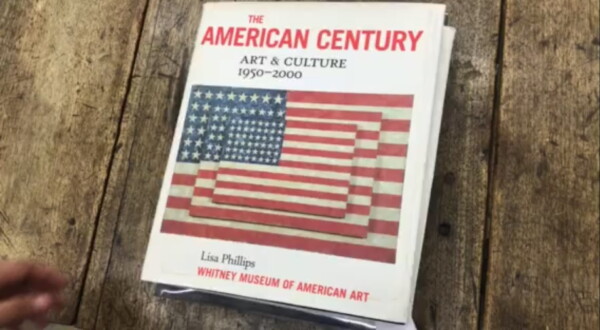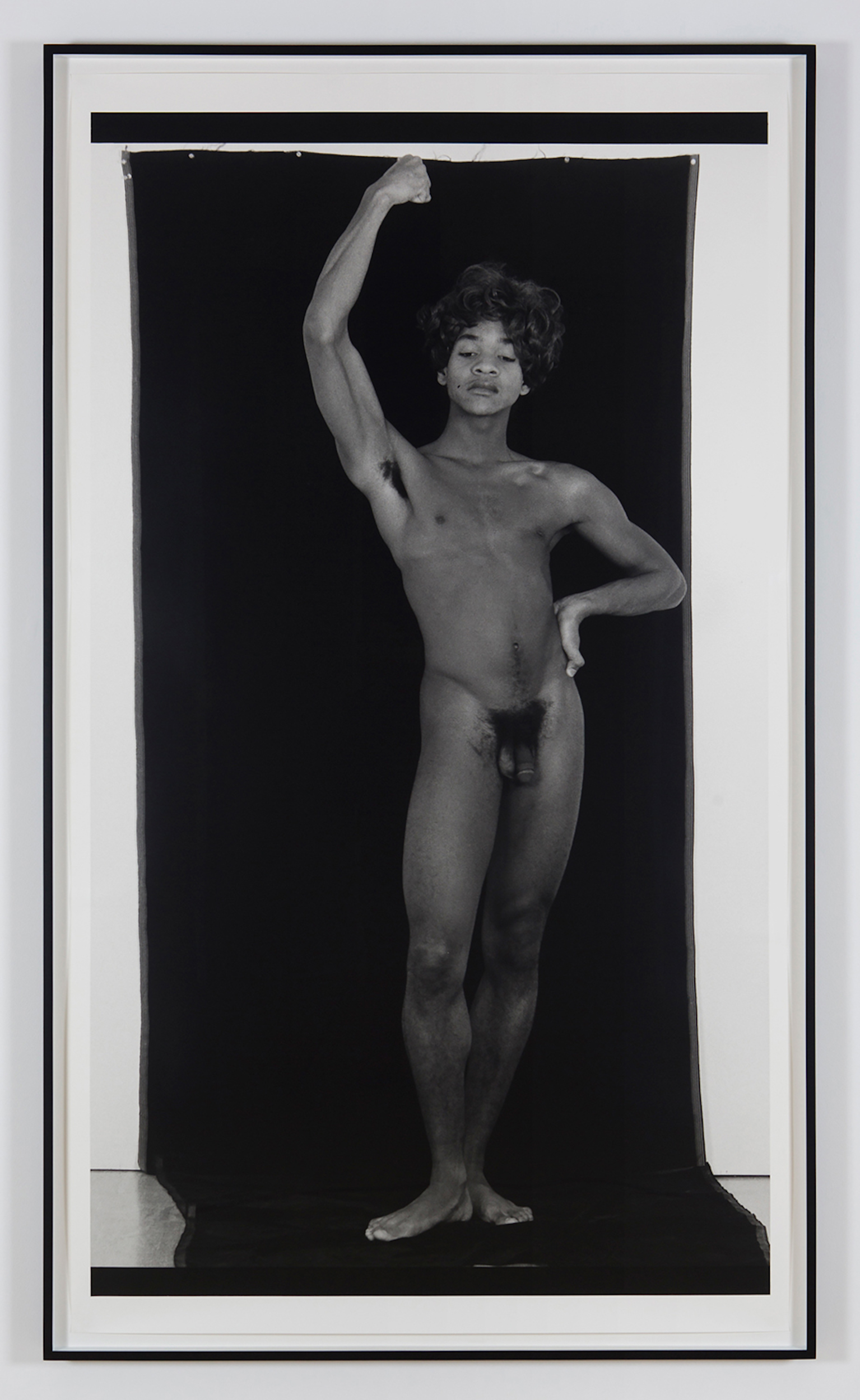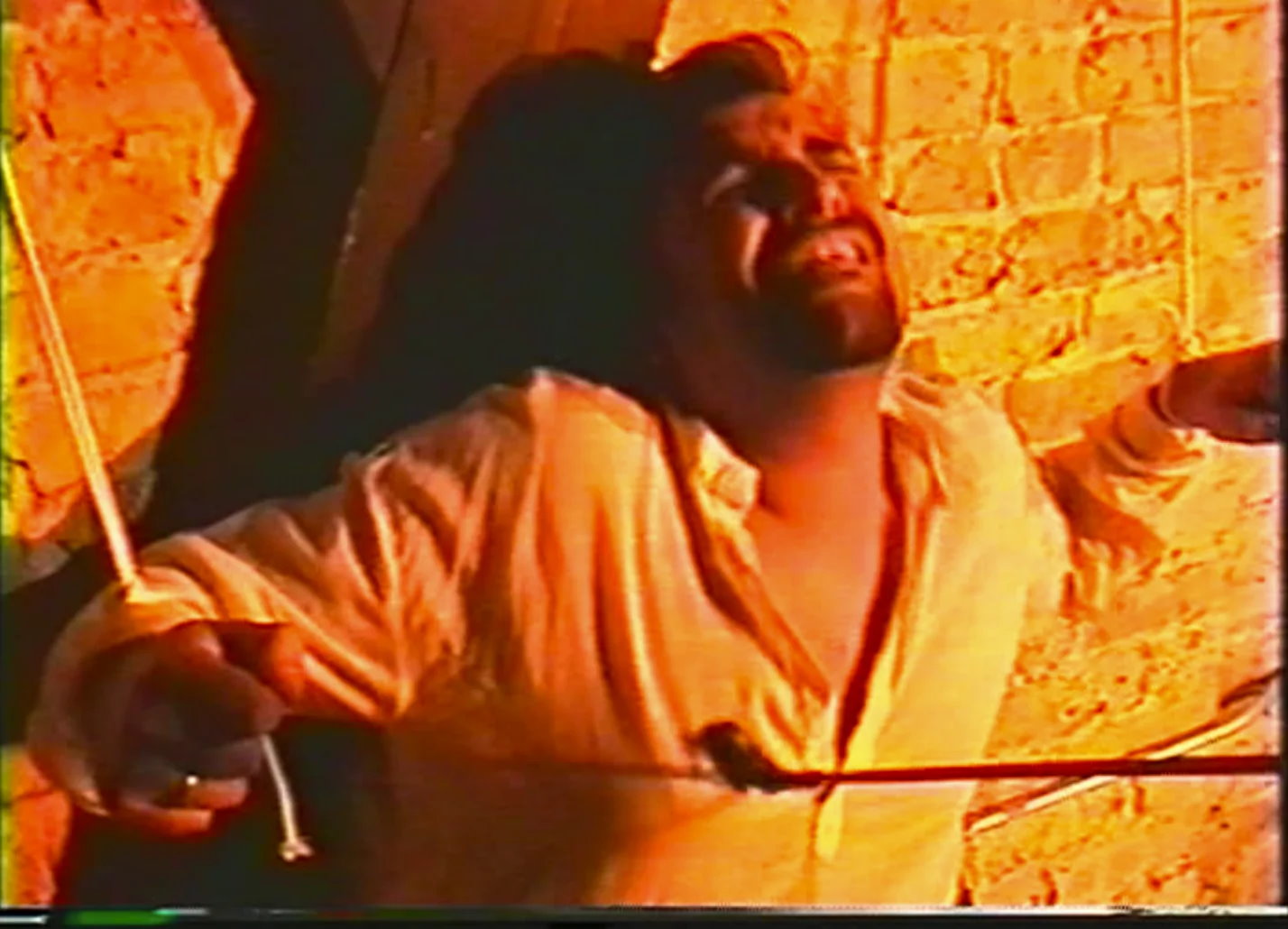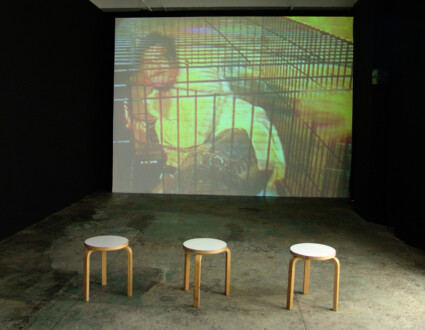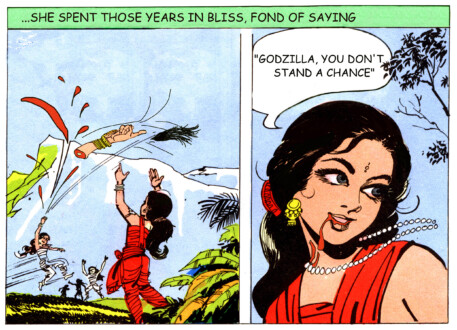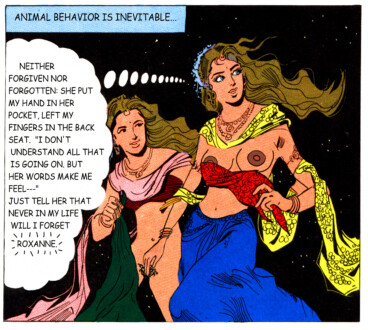Thomas Erben Gallery – 25 years (Works)
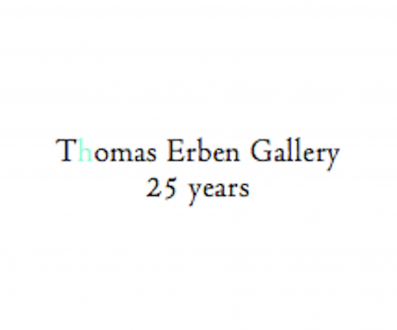 1. Lorraine O’Grady Sisters IV, 1980/1994 - 2. Senga Nengudi Wet Night, Early Dawn, Scat-Chant, Pilgrims Song (exhibition portrait), 1996 - 3. Lyle Asthon-Harris Man and Woman #2, 1987-88 - 4. Adrian Piper Food for the Spirit, 1971 - 5. Adrian Piper The Mythic Being, Cycle I, 1974 - 6. Oladélé Ajiboyé Bamgboyé Arise, 1991 - 7. Helena Almeida Pintura Habitada, 1975 - 8. Adrian Piper Vanilla Nightmares #9, 1986 - 9. Preston Scott Cohen Eyebeam (Floor 0 – roof), 2001 - 10. Tom Wood Untitled (Looking for Love), 1982-85 - 11. Senga Nengudi Répondez s’il vous plaît, 2003 - 12. Fang Lijun 2001.11.22, 2001 - 13. Bharti Kher Angel, 2004 - 14. Jutta Koether I Is Had Gone, 2005 - 15. Senga Nengudi Asp-Rx, 2005 - 16. Tejal Shah What are You? (installation view), 2006 - 17. Dona Nelson Brain Stain, 2006 - 18. Chitra Ganesh The Mystery (from Tales of Amnesia), 2002 - 19. Huma Mulji Still Life, 2004 - 20. Ashok Sukumaran Glow Positioning System (video still), 2005 - 21. Krishna Reddy The Great Clown, 1975-82 - 22. Sheela Gowda Private Gallery, 1999 - 23. Looped and Layered: A Selection of Contemporary Art from Tehran, 2009 - 24. Rose Wylie Plastic Bride Profile & Cat, 1998 - 25. Yamini Nayar Cascading Attica, 2011 - 26. Yve Laris Cohen Cross Hesitation, 2012 - 27. Newsha Tavakolian Look, 2012-13 - 28. Gauri Gill Sunita, Sita and Nirmala, 2003 - 29. Dona Nelson Phigor, 2014 - 30. Barbad Golshiri Tombstone of Beckett, 2000-13 - 31. Mike Cloud Removed Individual, 2013 - 32. Rose Wylie Girl and Spiders, 2015 - 33. Dona Nelson models stand close to the paintings, 2017 - 34. Kathrin Sonntag Problems and Solutions, 2017 - 35. Harriet Korman Untitled, 2017 - 36. Mike Cloud Tears in abstraction (studio portrait), 2019 - 37. ecofeminism(s) 2020 - 38. Harriet Korman Notes on Painting: 1969 – 2019, 2020 - 39. Dona Nelson Stretchers Strung Out on Space (studio portrait), 2021 - 40. Stefan Sagmeister Beautiful Numbers, 2021.
">
1. Lorraine O’Grady Sisters IV, 1980/1994 - 2. Senga Nengudi Wet Night, Early Dawn, Scat-Chant, Pilgrims Song (exhibition portrait), 1996 - 3. Lyle Asthon-Harris Man and Woman #2, 1987-88 - 4. Adrian Piper Food for the Spirit, 1971 - 5. Adrian Piper The Mythic Being, Cycle I, 1974 - 6. Oladélé Ajiboyé Bamgboyé Arise, 1991 - 7. Helena Almeida Pintura Habitada, 1975 - 8. Adrian Piper Vanilla Nightmares #9, 1986 - 9. Preston Scott Cohen Eyebeam (Floor 0 – roof), 2001 - 10. Tom Wood Untitled (Looking for Love), 1982-85 - 11. Senga Nengudi Répondez s’il vous plaît, 2003 - 12. Fang Lijun 2001.11.22, 2001 - 13. Bharti Kher Angel, 2004 - 14. Jutta Koether I Is Had Gone, 2005 - 15. Senga Nengudi Asp-Rx, 2005 - 16. Tejal Shah What are You? (installation view), 2006 - 17. Dona Nelson Brain Stain, 2006 - 18. Chitra Ganesh The Mystery (from Tales of Amnesia), 2002 - 19. Huma Mulji Still Life, 2004 - 20. Ashok Sukumaran Glow Positioning System (video still), 2005 - 21. Krishna Reddy The Great Clown, 1975-82 - 22. Sheela Gowda Private Gallery, 1999 - 23. Looped and Layered: A Selection of Contemporary Art from Tehran, 2009 - 24. Rose Wylie Plastic Bride Profile & Cat, 1998 - 25. Yamini Nayar Cascading Attica, 2011 - 26. Yve Laris Cohen Cross Hesitation, 2012 - 27. Newsha Tavakolian Look, 2012-13 - 28. Gauri Gill Sunita, Sita and Nirmala, 2003 - 29. Dona Nelson Phigor, 2014 - 30. Barbad Golshiri Tombstone of Beckett, 2000-13 - 31. Mike Cloud Removed Individual, 2013 - 32. Rose Wylie Girl and Spiders, 2015 - 33. Dona Nelson models stand close to the paintings, 2017 - 34. Kathrin Sonntag Problems and Solutions, 2017 - 35. Harriet Korman Untitled, 2017 - 36. Mike Cloud Tears in abstraction (studio portrait), 2019 - 37. ecofeminism(s) 2020 - 38. Harriet Korman Notes on Painting: 1969 – 2019, 2020 - 39. Dona Nelson Stretchers Strung Out on Space (studio portrait), 2021 - 40. Stefan Sagmeister Beautiful Numbers, 2021.
">
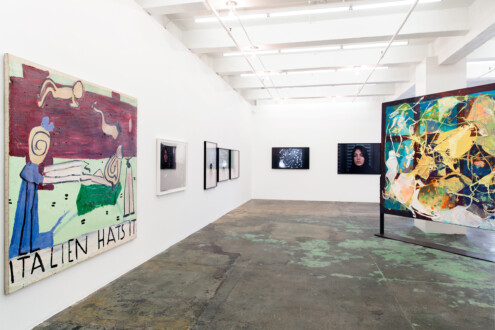
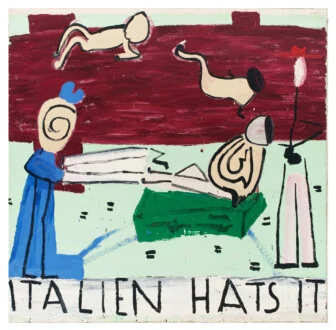 Italien Hats, 2003. Oil on canvas, 72 x 68 in.
Italien Hats, 2003. Oil on canvas, 72 x 68 in.
We presented Rose Wylie’s 2003 painting Italien Hats at the 2010 edition of NADA Miami Beach. Wylie's work made its first appearance at the gallery in Animate Matter, a group show in February/March 2010, which was then followed by her first, Roberta Smith reviewed - and almost sold out - US solo exhibition in October/November. In the July 9, 2010 issue of The Guardian, Germaine Greer introduced Wylie's work to a wider audience asking, "Who is Britain's hottest new artist?" Her answer: "A 76-year-old called Rose Wylie." How prescient this assessment has proven! Particularly interesting in Italien Hats are Wylie’s references to sculpture (both Henry Moore and the early David Smith come to mind); the sexual innuendo of her forms; and the spatial tension generated by the two floating figures, which - ostensibly splayed out on a purple lawn - simultaneously form a circle with the figures in the foreground (evoking Matisse’s celebrated Dancers).
">
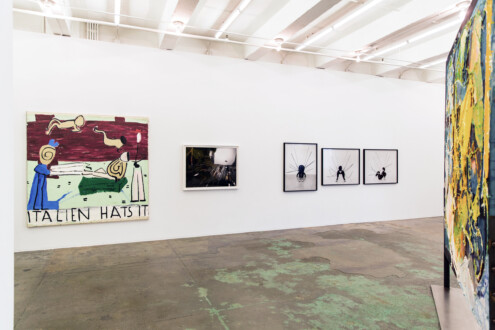
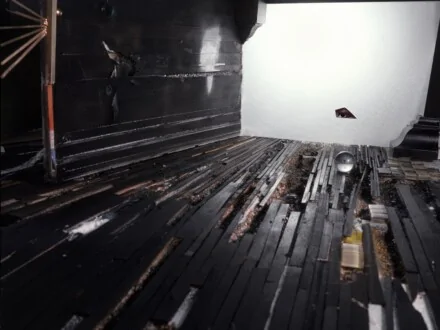 Cleo, 2009.
C-print, 30 x 40 in. Edition of 5 plus II AP
Cleo, 2009.
C-print, 30 x 40 in. Edition of 5 plus II AP
Yamini Nayar's exemplary, early photograph Cleo (30 x 40 in, ed. of 5 +2AP) was included in Arrested Views (2009), a two-person show with Sheela Gowda which was reviewed by Holland Cotter in The New York Times and by Abhay Sardesai in Art India, as well as being listed in The New Yorker.
Pairing Nayar's work with the more established South Asian Gowda, Arrested Views served as an excellent introduction to the artist’s practice:
Nayar wryly builds transitional architectural spaces and objects out of found and readily available materials such as plaster, paperboard or wooden scraps. Her process-oriented practice not only fuses sculpture with photography but also incorporates painting, lighting as well as historical photographic color techniques — and, most importantly, time. Material traces of earlier stages of the constructions — or in her more recent work, the merging of multiple exposures taken from different phases of the same model— all point towards the temporary aspects of her work, creating multidimensional, transtemporal visual spaces.
Serving as the photograph's “punctum," you see the eye collaged onto the construction's background reflected in the glass sphere resting on the floor.">
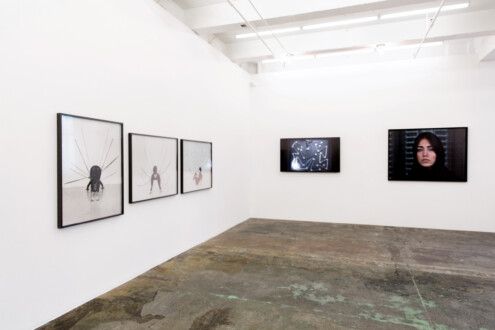
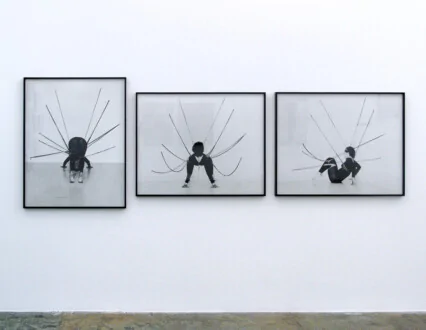 Performance Piece (Triptych), 1978.
Gelatin silver print, edition of 5 (+1 AP), 40 x 31.5 or 31.5 x 40 in. ea.
Performance Piece (Triptych), 1978.
Gelatin silver print, edition of 5 (+1 AP), 40 x 31.5 or 31.5 x 40 in. ea.
Senga Nengudi’s Performance Triptych (1978) has become a widely exhibited, reproduced and now iconic work. We exhibited the piece in 2013 as part of Senga Nengudi – Performances 1976 – 81 after publishing the photographs in an edition of 5 (+1 AP). The work is now in the collections of (in order of acquisition date) the Studio Museum in Harlem; the Centre Pompidou, Paris; Lenbachhaus, Munich; and the Guggenheim, New York.
The triptych is currently on view at the Guggenheim in Knotted, Torn, Scattered: Sculpture after Abstract Expressionism; at the Mori Art Museum, Tokyo, in Another Energy: Power to Continue Challenging - 16 Women Artists from around the World; the Philadelphia Museum of Art, in the last of four legs of Nengudi’s traveling exhibition Topologies; and at the gallery as a part of 25 years. ">
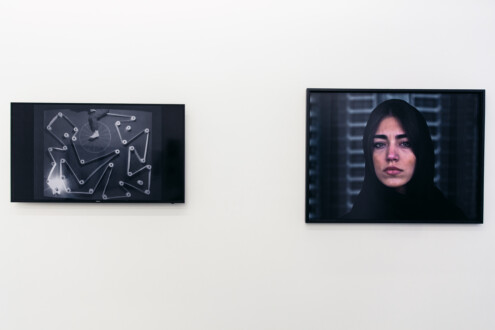
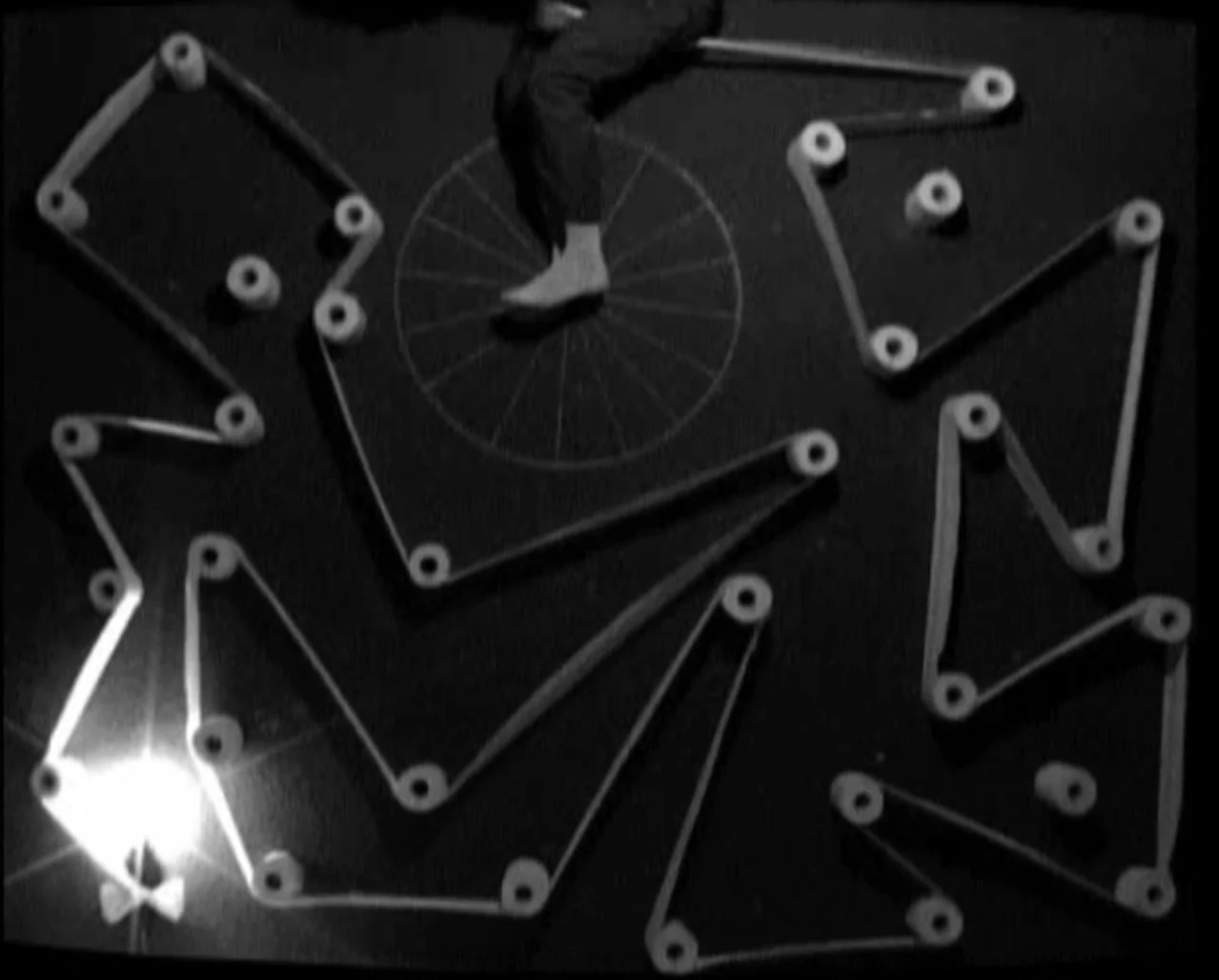 Jxalq [(d3ælgh) v.t. & i. act of creating a masturpiece], 2006.
Video endless loop, edition of 5 (+1 AP).
Jxalq [(d3ælgh) v.t. & i. act of creating a masturpiece], 2006.
Video endless loop, edition of 5 (+1 AP).
Jxalq [(d3ælgh) v.t. & i. act of creating a masturpiece], Barbad Golshiri’s 2006 video, takes aim at the connection between “male genius” and the notion of “master” works. While Warhol deflates the often discussed ejaculatory quality of Jackson Pollock’s drip paintings — by having his collaborators simply piss on canvases — Golshiri ridicules this notion of masculine genius through a comically staged, generative masturbatory gesture.
Seemingly but actually not repeated, Jxalq’s image and unnervingly consoling sound - an Iranian lullaby, of which the lower tones have been removed - only vary ever so slightly. Presented as an endless loop, the work undermines the expectations of narrative and time which are usually associated with the medium.
Holland Cotter reviewed our 2009 exhibition Looped and Layered - A Selection of Contemporary Art From Tehran in The New York Times, singling out Golshiri’s video which we projected large scale and whose sound permeated the show. He wrote:
“My favorite, though, is a video projection by Barbad Golshiri of what appears to be an impressive belted machine powered by a foot-pedaled wheel. In reality the contraption is made from unrolled toilet paper and does absolutely nothing but look original and intriguing. And that’s enough. I hope to see more of Mr. Golshiri in New York soon”.
We followed up on Mr. Cotter’s suggestion, presenting Golshiri’s solo shows Nothing Is Left to Tell in 2010 and Curriculum Mortis in 2013.">
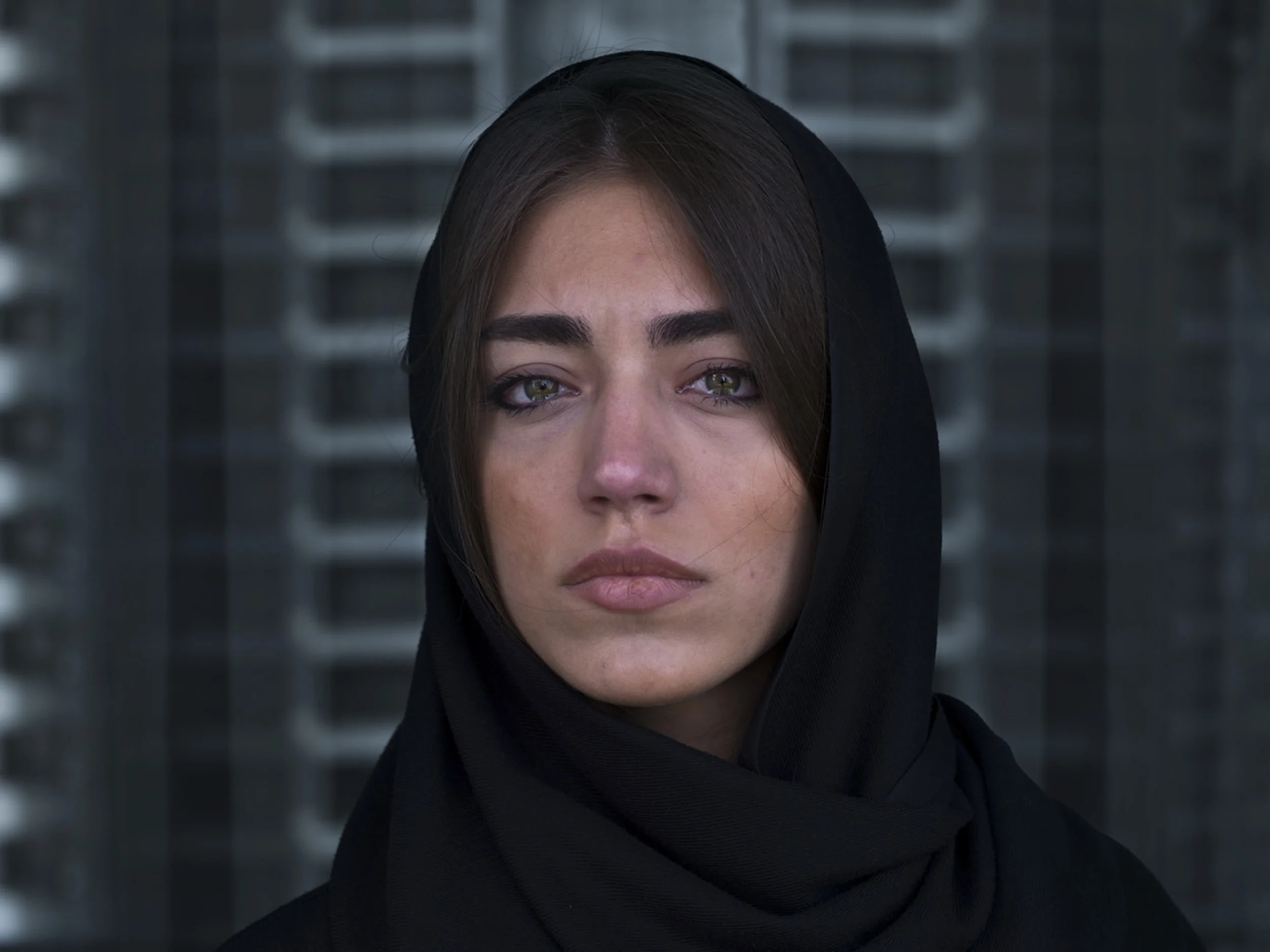 Look (portrait), 2012/13. Inkjet print, edition of 7 (+2 AP), 41 x 55 in.
Look (portrait), 2012/13. Inkjet print, edition of 7 (+2 AP), 41 x 55 in.
This photograph by Newsha Tavakolian was part of Look, her first US solo exhibition in 2013. Over the years - parallel to her career as a photojournalist, publishing in such venues as Time, Newsweek, Stern, Le Figaro, The New York Times, Der Spiegel, Le Monde, and National Geographic - Tavakolian has developed projects focusing on women’s rights and other social issues. Since 2019 she is a full member of Magnum Photo.
Regarding this body of work, she wrote:
“Look began with my desire to look deeply into the lives of people around me whom I have known for over ten years, and who live in my building. I wanted to bring to life the story of a nation of middle-class youths who are constantly battling with themselves, their isolated conformed society, their lack of hope for the future and each of their individual stories. Over a period of six months, at 8 pm, I fixed my camera on a tripod in front of the window where I had watched the same view of the city for ten years. I tried to capture a moment of each of their stories, within the frame of a window looking out onto the cold concrete buildings which surround us daily.”">
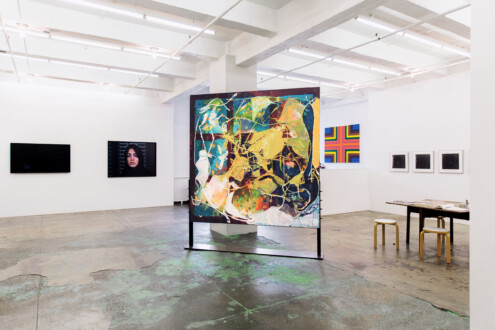
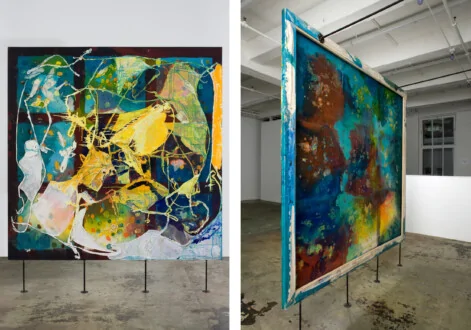 Night Studio, 2008. Acrylic mediums and dyed cheesecloth on canvas, 83.5 x 84 in.
Night Studio, 2008. Acrylic mediums and dyed cheesecloth on canvas, 83.5 x 84 in.
Dona Nelson’s major, double-sided Night Studio (83.5 x 84in.) is work no. 6 in our 25 years survey. This now classic painting first appeared at the gallery in a 2009 group show and was included in Stand Alone Painting, Nelson's survey exhibition at the Tang Museum in 2018.
In the press release for the 2009 show, we wrote:
“Having broken the hold of the hegemony of the image, these artists exemplify a shift in cultural consciousness itself towards the cohabitation of meta-narratives on an un-weighted plane. Often piece-meal in appearance, the disinterest in unification is merely a byproduct of these artists’ analytical appreciation for the cultural. At all times thoughtful and dynamic, the works on view dissolve the schizophrenic, illogical taint of multiple intentionality.” Sounds a bit convoluted and perhaps, Night Studio is just a great painting.... but then what makes a painting GREAT? Is it the artist's skill in execution? Their intellectual inquiry? The wider framework within which the work operates? Its emotional impact? Its content and formal relation to the medium's history? Or perhaps it's all of these things brought together, producing a rich, multi-dimensional aesthetic and intellectual experience.">
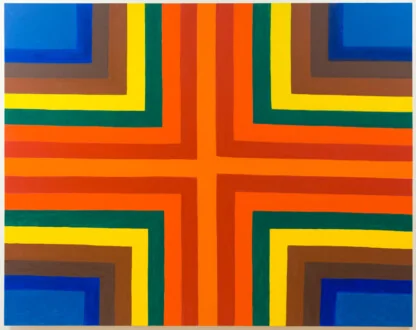 Untitled, 2016. Oil on canvas, 48 × 60 in.
Untitled, 2016. Oil on canvas, 48 × 60 in.
Our next artist, in whose work we have great confidence, is Harriet Korman. We chose her 2016 Untitled for the show, placing it in proximity to Adrian Piper’s photographic work Food for the Spirit.
There is an intellectual and material rigor to Korman’s work which makes her paintings a product of the mind without forsaking the need to be emotionally and visually engaging that art must fulfill to become relevant to a wide audience. Korman achieves this through the use of oil paint, which is never mixed with white pigment, unusual color choices and juxtapositions that are often generated through playful oil pastel drawings produced at the onset of each new body of work.
Eschewing the usual tropes of geometric abstraction - such as hard edges, filled surfaces or ruled lines - Korman free-hands her paintings, modulating colors and lines as the work takes shape over multiple applications of paint. Though, as viewers, we may initially think that we “get” what the artist is doing, as we actually experience her paintings, they start to slip through our categories, inviting prolonged and repeated viewing.">
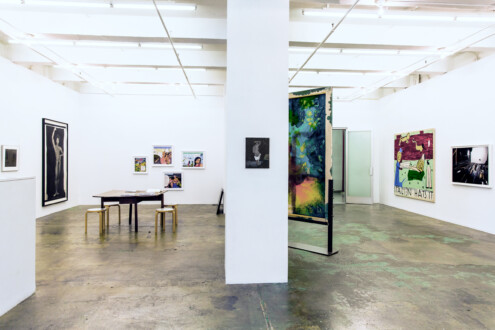
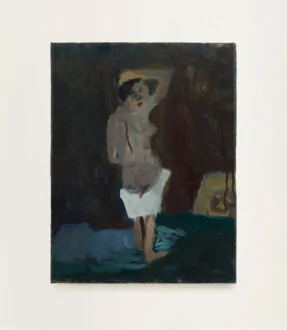 Woman Looking Back, 2017. Oil on canvas, 14 x 11 in.">
Woman Looking Back, 2017. Oil on canvas, 14 x 11 in.">
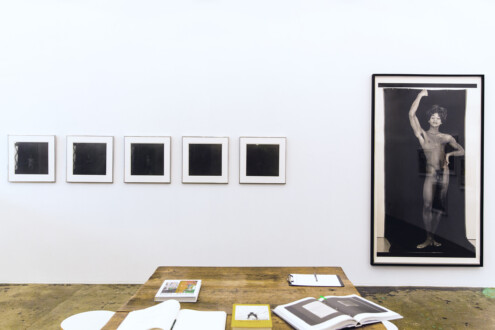
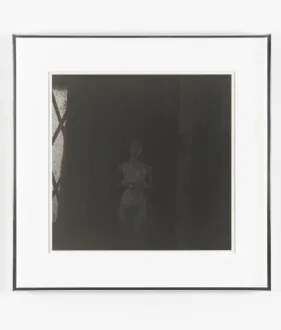 Food for the Spirit, 1971/1996. B/W silver print, selenium toned, 18 x 16 in. ea.
Food for the Spirit, 1971/1996. B/W silver print, selenium toned, 18 x 16 in. ea.
We published and exhibited Adrian Piper’s seminal set of 14 photographs Food for Spirit in 1997 — the gallery’s first and still resounding commercial success. At the time, MoMA’s portfolio viewing day allowed for unsolicited submissions, so we closed the show for a day and brought the framed set in a cab to the museum which then acquired one of the three (+ 1AP) editions. The Whitney followed, as did the Serralves Museum in Porto, Portugal. The Wellesley College acquired an abbreviated version of the set and quite a number of signed proofs made it into additional institutional, private and artists’ collections. Food for the Spirit — since widely exhibited and reproduced — is now considered one of Piper’s masterworks.">
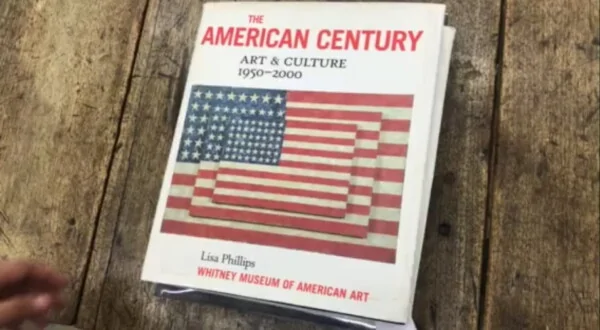 Food for the Spirit.">
Food for the Spirit.">
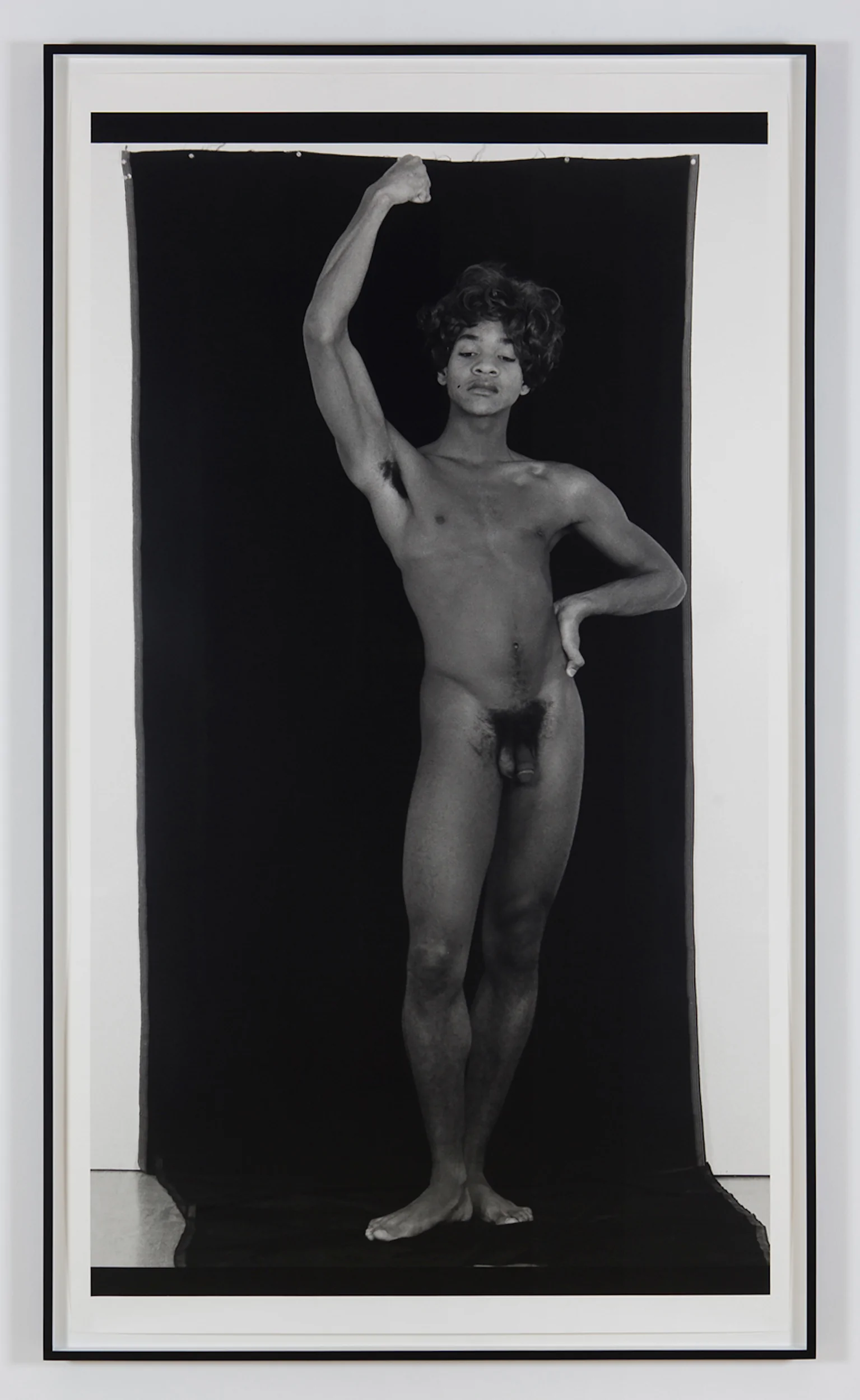 Constructs #12, 1989. B/W silver gelatin print, edition of 3, 72 x 48 in.
Constructs #12, 1989. B/W silver gelatin print, edition of 3, 72 x 48 in.
Lyle Ashton Harris’s Construct #12 from 1987-88 is one of a four-part series that was included in the groundbreaking exhibition “Black Male: Representations of Masculinity in Contemporary American Art,” curated by Thelma Golden at the Whitney Museum of American Art in 1994 and which then traveled to the Hammer Museum, Los Angeles, in 1995. This photograph was not part of our 1997 exhibition Lyle Ashton Harris – Early Works 1987-88 (The White Face Series), but since it reverberates with the representation of “the self” in Adrian Piper’s piece and links to the discussion of queerness in Chitra Ganesh’s Tales of Amnesia (2002/07) as well as Tejal Shah’s video Chingari Chumma (Stinging Kiss) (2000), we decided to include it nonetheless.">
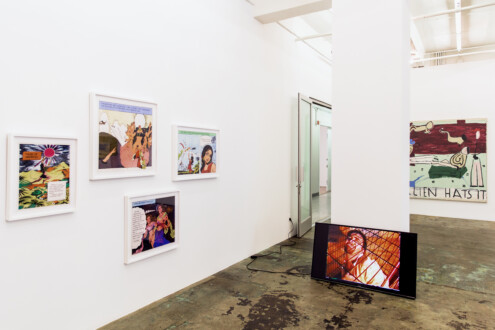
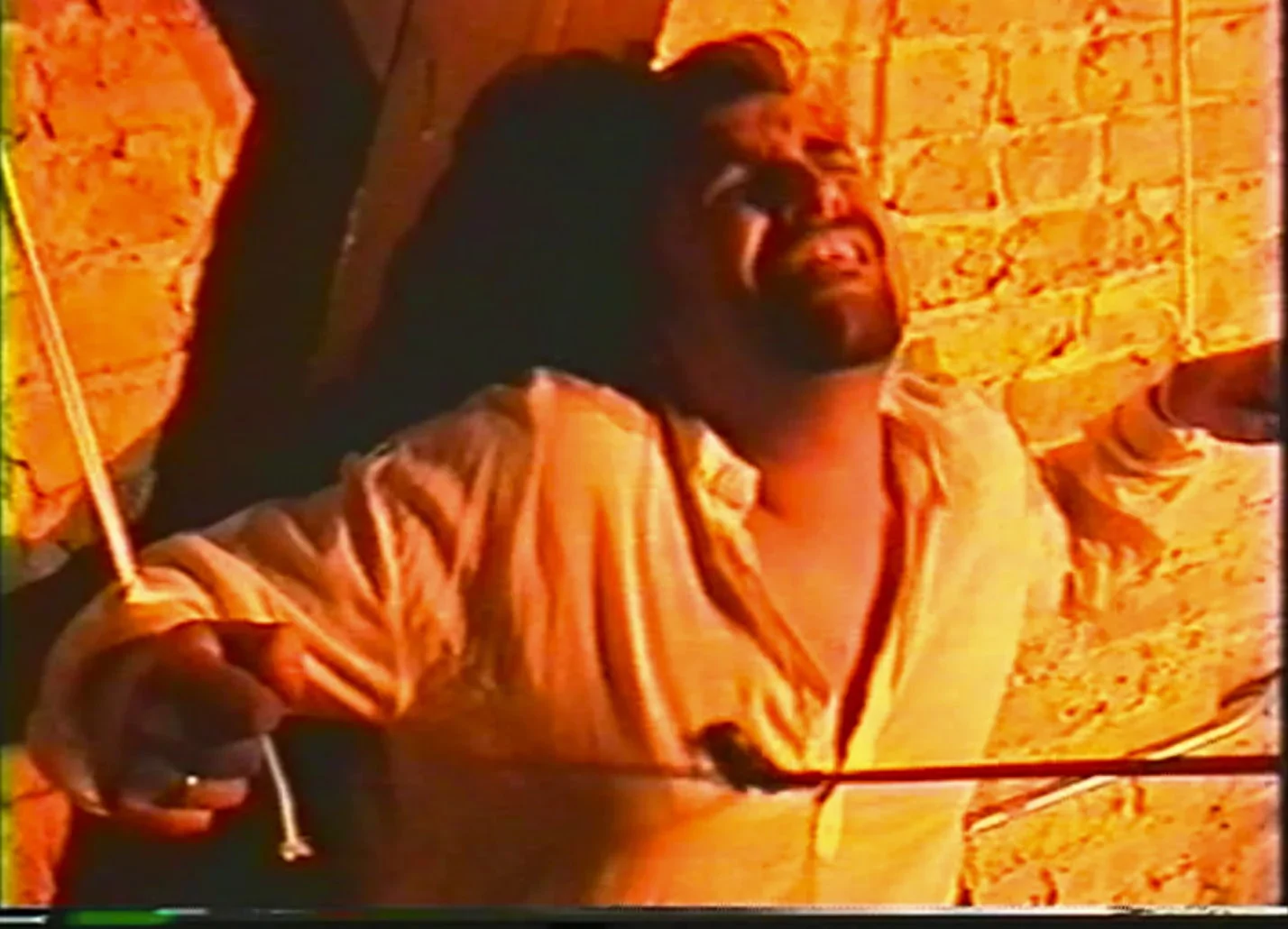 Chingari Chumma (Stinging Kiss), 2000. Single channel video on DVD, edition of 5.
Chingari Chumma (Stinging Kiss), 2000. Single channel video on DVD, edition of 5.
Tejal Shah’s 2000 video Chingari Chumma (Stinging Kiss) is a Bollywood send-up, porn flick and feminist inversion of gender roles, all in one. A parody of the Bollywood trope of a heroine suffering at the hands of a malicious dacoit until a masculine hero comes to her rescue, here the titillating female perpetrator binds, whips and cages the — oh so queer — male captive. The hero never arrives and can’t prevent a mutually pleasurable climax. We screened the video - loud and large screen - in Shah’s first appearance at the gallery together with Chitra Ganesh and Nicola Durvasula in 2006.">
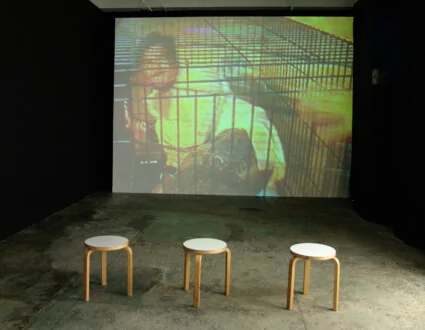 Nicola Durvasula, Chitra Ganesh, Tejal Shah (2006)">
Nicola Durvasula, Chitra Ganesh, Tejal Shah (2006)">
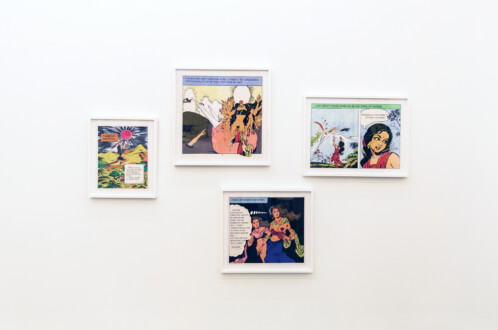
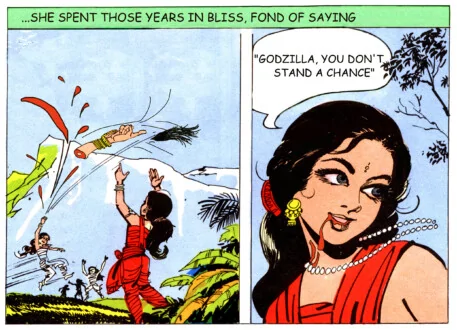 Godzilla (panel 3, Tales of Amnesia), 2002/07. Digital C-print, 19.25 x 26.25 in.
Godzilla (panel 3, Tales of Amnesia), 2002/07. Digital C-print, 19.25 x 26.25 in.
Before information became ubiquitously available on the internet and easily shared on social media, the complexity and multiplicity of the pantheon of Hindu gods, saints and mortals, as well as their innumerable travails and adventures, was illustrated and made accessible to young readers through Amar Chitra Katha comic books. Firmly and emotionally anchored in the Indian psyche, Ganesh smuggles in expressions of female desire by altering these iconic images and employing the means of collage. Please note the exquisitely punchy, often explicit language of the speech in Ganesh's retelling, with its intermingling of the profane and the sacred, the mythological and the philosophical. Ganesh studied Art-Semiotics and Comparative Literature at Brown University, where she received her BA magna cum laude, before attending Columbia University for her MFA. Conceived as a zine in 2002, which at the time was available at Printed Matter, the gallery published Tales of Amnesia as a 21 panel series of C-prints in 2007.">
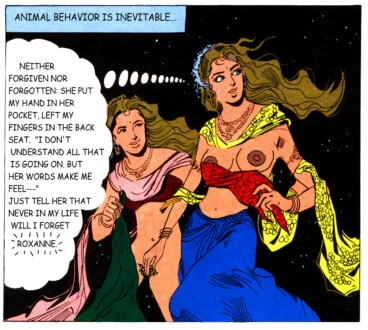 Roxanne (from Tales of Amnesia), 2002/07. Digital C-print, 19.5 x 22 in, edition of 5 (+1 AP). ">
Roxanne (from Tales of Amnesia), 2002/07. Digital C-print, 19.5 x 22 in, edition of 5 (+1 AP). ">
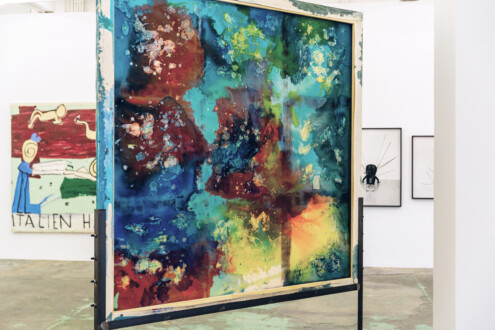
Selected Works
Pivotal exhibitions at the gallery include:
group show Feminism and the Legacy of Surrealism, 2022 | Janice Nowinski Recent Paintings, 2021 | Stefan Sagmeister Beautiful Numbers, 2021 | Dona Nelson Stretchers Strung Out On Space, 2021 | Harriet Korman Notes on Painting: 1969 – 2019, 2020 | group show ecofeminism(s), 2020 | Mike Cloud Tears in abstraction, 2019 | Harriet Korman Permeable/Resistant: Recent Drawings and Paintings, 2018 | Aditi Singh So much the less complete, 2018 | Mike Cloud Quilt painting, 2018 | Kathrin Sonntag Problems and Solutions, 2017 | group show Photography Out of Germany, 2017 | Dona Nelson models stand close to the paintings, 2017 | group show Painting Forward, 2016 | group show Soft Haze, 2016 | Aditi Singh All that is left behind, 2016 | Dona Nelson New Paintings, 2015 | Rose Wylie Girl and Spiders, 2015 | Mike Cloud Bad Faith and Universal Technique, 2014 | Gauri Gill ‘Balika Mela’ and ‘Jannat’, 2014 | Dona Nelson Phigor, 2014 | Yamini Nayar an axe for a wing-bone, 2013 | Barbad Golshiri Curriculum Mortis, 2013 | Newsha Tavakolian Look, 2013 | Senga Nengudi Performances 1976 – 81, 2013 | Yve Laris Cohen Waltz, 2012 | group show Iran Via Video Current, 2011 | Yamini Nayar Head Space, 2011 | group show Focus Shanghai, 2010 | Rose Wylie What with What, 2010 | Barbad Golshiri Nothing Is Left To Tell, 2010 | group show Thomas Erben at Travancore Palace, 2009 | group show Looped and Layered – A Selection of Contemporary Art from Tehran, 2009 | Sheela Gowda, Yamini Nayar Arrested Views, 2009 | group show Thomas Erben at Chatterjee & Lal, 2008 | Krishna Reddy A Life's Movement, 2008 | Dona Nelson in situ, 2008 | Ashok Sukumaran Glow Positioning System and Other Forms of Address, 2008 | group show Contemporary Art from Pakistan, 2007 | Chitra Ganesh Upon Her Precipice, 2007 | Tejal Shah What are You?, 2006 | Dona Nelson Brain Stain, 2006 | Senga Nengudi Asp-rx, 2005 | Jutta Koether I Is Had Gone, 2005 | group show Contemporary Art from India, 2004 | Fang Lijun Woodcuts, 2004 | Senga Nengudi Répondez s’il vous plaît, Nylon Mesh Pieces, 1975-77, 2003 | Tom Wood Looking for Love, 2002 | Adrian Piper Early Drawings and Other Works, 2001 | Preston Scott Cohen Toroidal Architecture, 2001 | Helena Almeida Pintura Habitada, 2001 | Tom Wood The Bus Project, 2000 | Oladélé Ajiboyé Bamgboyé The Unmasking, Part II, 2000 | Adrian Piper The Mythic Being, 1999 | Lorraine O'Grady Studies, 1998 | Adrian Piper Food for the Spirit, 1997/98 | Lyle Ashton Harris Early Works 1987-88, 1997 | Senga Nengudi Wet Night – Early Dawn – Scat-Chant – Pilgrim’s Song, 1996 | Lorraine O’Grady Photo Images 1980-91, 1993
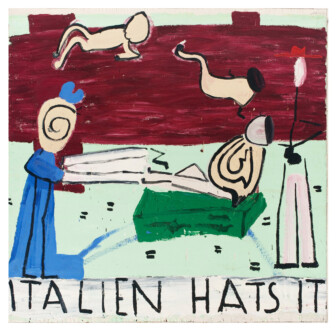
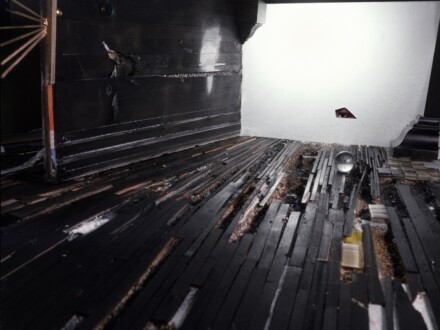
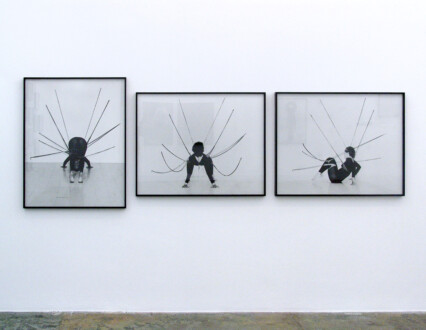
![Barbad Golshiri, excerpt from <i>Jxalq [(d3ælgh) v.t. & i. act of creating a masturpiece]</i>, 2006.
Video endless loop, edition of 5 (+1 AP).
<br></<br><br></<br>
<i>Jxalq [(d3ælgh) v.t. & i. act of creating a masturpiece]</i>, Barbad Golshiri’s 2006 video, takes aim at the connection between “male genius” and the notion of “master” works. While Warhol deflates the often discussed ejaculatory quality of Jackson Pollock’s drip paintings — by having his collaborators simply piss on canvases — Golshiri ridicules this notion of masculine genius through a comically staged, generative masturbatory gesture.
<br></<br><br></<br>
Seemingly but actually not repeated, <i>Jxalq’s</i> image and unnervingly consoling sound - an Iranian lullaby, of which the lower tones have been removed - only vary ever so slightly. Presented as an endless loop, the work undermines the expectations of narrative and time which are usually associated with the medium.
<br></<br><br></<br>
Holland Cotter reviewed our 2009 exhibition <i>Looped and Layered - A Selection of Contemporary Art From Tehran</i> in <i>The New York Times</i>, singling out Golshiri’s video which we projected large scale and whose sound permeated the show. He wrote:<br></<br>“My favorite, though, is a video projection by Barbad Golshiri of what appears to be an impressive belted machine powered by a foot-pedaled wheel. In reality the contraption is made from unrolled toilet paper and does absolutely nothing but look original and intriguing. And that’s enough. I hope to see more of Mr. Golshiri in New York soon”.
<br></<br><br></<br>
We followed up on Mr. Cotter’s suggestion, presenting Golshiri’s solo shows <i>Nothing Is Left to Tell</i> in 2010 and <i>Curriculum Mortis</i> in 2013.](https://www.thomaserben.com/wp-content/uploads/Jxalq.jpg)

